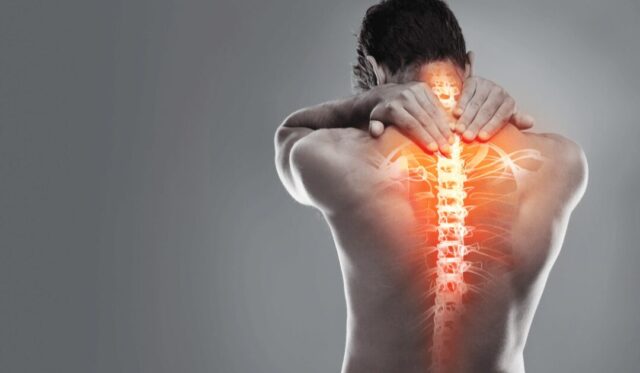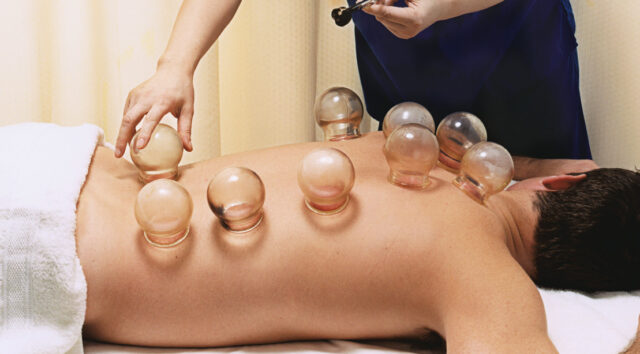
Chronic discomfort or pain is something that lasts for more than twelve weeks. Chronic pain lasts beyond the expected time required for healing a wound or injury. Usually, chronic discomfort is noticed in case of arthritis, fibromyalgia or spine damage. However, at times body pain that results from injury or surgical procedures and does not heal in the short term can also result in persistent discomfort.
Dealing with persistent discomfort is essential as well as challenging. Hence, no single approach, be it conventional medicine (painkillers, injections) or unconventional medicine (acupuncture, yoga), is enough to deal with it. In the present times, doctors favor taking an integrative medicine approach when it comes to dealing with chronic discomfort.
How Integrative Neurology Helps In Dealing With Chronic Pain

Chronic pain that lasts for many years can be seriously debilitating, putting a lot of pressure on patients and their caregivers. Managing persistent discomfort is not possible with only conventional techniques; hence patients are going for multiple treatment regimes to decide what suits them the most.
In this blog post, you will come across unconventional approaches to medicine that can complement surgeries, pharmaceutical drugs and injections when dealing with long-term discomfort.
Practicing Yoga And How It Helps Manage Pain

Yoga is a spiritual discipline that involves meditation and breath control to achieve mindfulness. It involves using definite body postures that are useful in alleviating symptoms of several diseases. Dealing with long-term persistent pain is one of the many areas where regular yoga practice produces effective cures.
The exact mechanism by which breath control or yogic postures help manage discomfort is not known. But many experts believe that yoga improves psychological well-being and relaxes a person mentally and physically. Being at peace psychologically can help deal with pain because when a person is more happy, he becomes more resilient in handling pain.
Many experts believe that when a person masters mindfulness, his brain learns how to control pain signals. Hence, when you master yoga, it is not that the pain disappears magically; instead, you can manage to tolerate the pain you feel.
Ancient Chinese Techniques Like Acupuncture To Deal With Discomfort

Acupuncture is an ancient Chinese technique that makes use of very fine needles to deal with discomfort in different parts of the body. The idea behind the therapy is that punching several tiny holes in the body with tiny pins forces the body to secrete endorphins.
Endorphins are the natural chemical that the body uses for pain management. So when an acupuncture expert forces the body to release more endorphins, he helps reduce the sensation of chronic discomfort.
In the Chinese form of acupuncture, the expert may twirl the needle slightly to combine the piercing of needles with electrical stimulation to get a more enhanced effect. However, in the Japanese version of acupuncture, the needles are inserted on a shallow level under the patient’s skin.
Acupuncture is a safe technique, and changes of complications or side effects are minimal, so it has survived as a chronic pain management strategy for a long time.
Cupping Therapy

Cupping, like acupuncture, is an ancient healing method that gained widespread recognition when popular sports persons were spotted with cupping marks on their bodies. Usually, heated glass cups are used to apply suction on a specific body area to increase the blood flow to that area.
In many cases (hijama or wet cupping), the affected part is pierced with needles before applying the suction force. It is widely believed that improved blood flow helps remove toxins and bring fresh oxygenated blood to the afflicted tissues or muscles.
In most cases, cupping does not have any serious side effects; hence the therapy has gained widespread popularity. However, if you are someone who has a problem with persistent skin discoloration caused by cupping or if you have psoriasis, you must avoid cupping therapy.
Chiropractic Techniques And Management Of Discomfort

Chiropractic is an alternate medical regimen that involves the realignment of misaligned joints. Usually, the chiropractor moves the joints in such a manner that the patient gains more mobility and is relieved of chronic discomfort. Several spine-related issues and problems, like frozen shoulders, are often cured with the help of chiropractic practices.
Many people have taken to chiropractic techniques to improve mobility, posture and relieve themselves of pain. However, many are still apprehensive about using chiropractic practices as a therapy of choice. People believe that manipulating the position of bones in the spine may lead to paralysis. But if you visit a qualified and well-experienced chiropractor, you should not be worried about extreme negative consequences.
Changing Diet Plans

Changing what you eat can also be an effective way to deal with persistent discomfort. Experts suggest that Mediterranean diets that are rich in unprocessed grains and vegetables are good for dealing with inflammation. Moreover, vegan diets are considered effective for controlling cholesterol levels and reducing inflammation, making pain alleviation easier.
Usually, diet modification regimens that increase the content of anti-inflammatory food and unsaturated fats are used to deal with chronic pain.
Use Of Magnetic Field Therapy

Magnetic field therapy, much like acupuncture and acupressure, works by improving the blood flow to the affected body part. Magnetic waves are used to improve blood flow which removes toxins and improves oxygen levels in the affected body parts.
Magnetic field therapy can be used for treating persistent pain; however, some people may face problems like dizziness, vision problems, etc. Also, people who have a pacemaker or any metallic implant or those who use an insulin pump should avoid magnetic field therapy.
Conclusion
Many older adults are taking recourse to alternative medical therapies to lead a regular life. Some diseases like arthritis are not curable hence managing the symptoms is the best way to deal with such ailments. Alternative medicine may not have solid scientific backing like conventional medicine, yet there is no denying that they are effective. So, many patients use integrative medicine to get the best of both worlds when it comes to persistent pain management.









